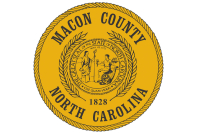What lessons from the 2016 primary?
 By Chris Cooper • Guest Columnist
By Chris Cooper • Guest Columnist
If I had to use one word to describe the North Carolina primary, it would be predictable. Boring, even. The very same pollsters who blew the Michigan Democratic primary hit the nail on the head in North Carolina. It’s almost impossible to find a pollster who did not predict that the top of the ticket would feature wins by Trump, Clinton, Burr, Ross, McCrory and Cooper. Even the turnout was, well, average for a presidential year (virtually identical to statewide voter turnout in 2008 and 2012).
Despite the fact that primaries can give us a good sense of the preferences of each political party in isolation, primary results can’t tell us much about general election outcomes. In a general election, the vast majority of voters have standing commitments to one political party or another that overrides the patterns we see in a primary, when the electorate is much easier to sway.
Furthermore, turnout is much lower in the primary than in the general election; these reliable, politically informed primary voters tell us nothing about the less-attentive general election electorate that we will encounter in November. As a result, be cautious when any pundit, editorial writer or political scientist implies that we can learn anything about the general election outcomes or patterns from the primary.
There was one issue, however, where voters of both parties had an opportunity to cast a vote on primary day, and thus where we can eliminate caveats about generalizing to the entire electorate from the votes of a relatively small number of partisans—the Connect NC bond. The bond passed with a whopping 63 percent of the vote (a mandate by virtually any definition) and passed in 99 of North Carolina’s 100 counties (with Pender County as the only holdout). Unlike single party candidates, here, we can learn a good bit by examining what factors might help us explain why the bond passed at different rates in different places.
A likely suspect to explain this disparity across counties might be turnout. After all, pro-bond groups invested heavily in a public relations campaign to further their cause. We might expect that the bond benefited from these pockets of high turnout. Interestingly, however, the data do not bear out this idea. Counties with high turnout were no more likely than counties with low turnout to support the bond.
Related Items
Many also suggested that the racial make-up of the county might be important. Perhaps given historical barriers to access to higher education, counties with larger proportions of African-Americans, Latinos or Native Americans might be less apt to support the bond. Again, the data do not support this assumption. Racial diversity, no matter how it’s measured, had no impact on support for the bond in North Carolina counties.
In fact, partisanship, as measured by the relative proportion of Democratic and Republican registered voters in the county, is the only thing that can help explain differences in bond passage rates across the state. Even here, though, we should be careful not to make too much out of these findings. Although Democratic-leaning counties did vote for the bond in greater numbers than Republican-leaning counties, all counties but one (regardless of whether the Democratic Party had 50 percent plus 1 of the voters) voted “yes.” From this perspective, this was the one truly bipartisan measure on the ballot.
Primaries are fascinating affairs — particularly this year. Let’s just keep in mind what we can and what we cannot learn from them.
(Christopher Cooper is professor and head of the Department of Political Science and Public Affairs at Western Carolina University. This email address is being protected from spambots. You need JavaScript enabled to view it..)









